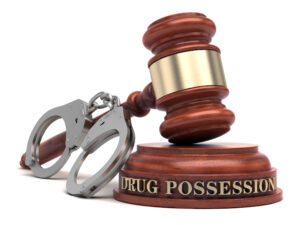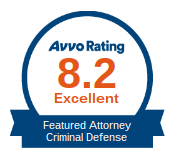
When someone gets arrested for a drug offense, there are two things the justice system can do: put them in jail as a punitive measure or rehabilitate them through a specialized program. The correct approach has been hotly debated in the form of drug courts vs. jail sentences for a while, but more and more jurisdictions are considering alternatives to traditional jail time as a solution.
For people battling substance abuse, the way they’ll be treated after being arrested for a drug offense can change the course of their lives. It can even make the difference between recovery and relapse.
While both approaches have merit, rehabilitation is a better outcome for the individual in question. Over the long term, it may be a better solution for the wider community as well. Let’s see why.
What Are Drug Courts?
Unlike regular courts, the main point of a drug court isn’t to punish a drug offender for their transgression. Instead, drug courts look for ways to solve the problem by helping people win the battle with addiction.
In the case of non-violent drug offenses like simple possession, drug courts offer treatment plans that give offenders specific steps after being charged and much-needed structure. Throughout the plan, they must:
- Seek help through therapy,
- Accept regular drug testing, and
- Appear before a judge regularly to check their progress.
Special drug courts don’t “excuse” criminal behavior. Instead, they try to treat the root cause — substance abuse disorders. That’s why drug courts help offenders through counseling and wellness programs. They even help offenders get back on their feet with vocational training.
While critics of drug courts often point to a supposed lack of accountability, in reality, that’s far from the truth. In fact, accountability is the foundation of drug courts since they reward or punish participants based on their behavior in the program. If they go through the program successfully and stick to its rules, their charges may be reduced or dismissed.
On the other hand, offenders who go through drug court often get a regular jail sentence if they don’t follow through on their promises upon entering the program.
The Traditional Path: Jail Sentences
The other option is a traditional jail sentence. In other words, confinement in a facility is a punishment for a drug offense. While this may seem like a strong punitive measure, it does little for both society and the offender.
While serving jail sentences, people often spend years or months behind bars, but this approach doesn’t address the root cause of their substance abuse. Conversely, drug courts provide tools for recovery and build habits that support lasting sobriety and reduce recidivism. Once offenders go back out into society after a jail sentence, they often become repeat offenders. Prison time can radicalize them into becoming even worse offenders, so the results are ultimately a net negative for the community.
Sure, being locked up in a correctional facility means the person struggling with addiction won’t have access to drugs. But this is only a temporary reprieve. In practice, most prisons and jails don’t have the resources or well-equipped staff to provide consistent therapy with long-term benefits. All of this makes relapse likely once they’re released.
Comparing the Goals: Recovery or Punishment?
Drug courts aim to rehabilitate, while creating legal consequences for relapse. They treat addiction as a public health concern and invest in long-term behavioral change. The approach is intensive and requires active participation from the offender, as well as ongoing supervision from a dedicated team.
Jail, on the other hand, focuses on punishment and deterrence. The assumption is that the experience of incarceration will discourage future offenses. However, when addiction is the driving force behind the crime, punishment alone often fails to change behavior.
This core difference defines the argument over drug courts vs. jail sentences — are we solving a problem or delaying it?
Why Drug Courts Work
Most people charged with drug-related crimes are not hardened criminals. They are individuals battling addiction. Drug courts recognize this and intervene with treatment instead of only penalties. Programs often include:
- Cognitive-behavioral therapy
- Group counseling
- Job readiness support
- Medical supervision
- Ongoing check-ins with the court
Several studies show that people who complete drug court programs are less likely to be arrested again compared to those who serve jail time. These courts lower recidivism because they don’t just punish. Instead, they prepare people for life after the court system.
They Keep Families Intact
Serving a jail sentence doesn’t just punish the offender for their transgression. On top of that, the sentence often leads to job loss, housing instability, and family disruption. Drug courts, while still demanding, allow participants to remain in the community. Many can continue working, supporting their children, and contributing to society while completing treatment.
Which Is Better?
In recent evidence-based debates about drug courts vs. jail sentences, the former option tends to come out on top. Of course, this is only possible for non-violent drug offenses, where the punitive aspect is less important than rehabilitation.
With violent drug charges, jail time is usually necessary. However, if the crux of the issue is a non-violent person struggling with addiction, rehabilitation is probably a better path forward. Through drug courts, offenders have a choice: succeed, reclaim their lives, and get back to their families, or fail and serve a jail sentence anyway. In our battle against drug-related crime, recovery is the key to breaking the cycle.
Author bio: Maria Alonso is the VP of Corporate Development at Sygnity Wellness, Florida’s leading telehealth platform for mental health treatment. Maria has a decade of experience as a representative and account manager in the hospital and healthcare industry.





